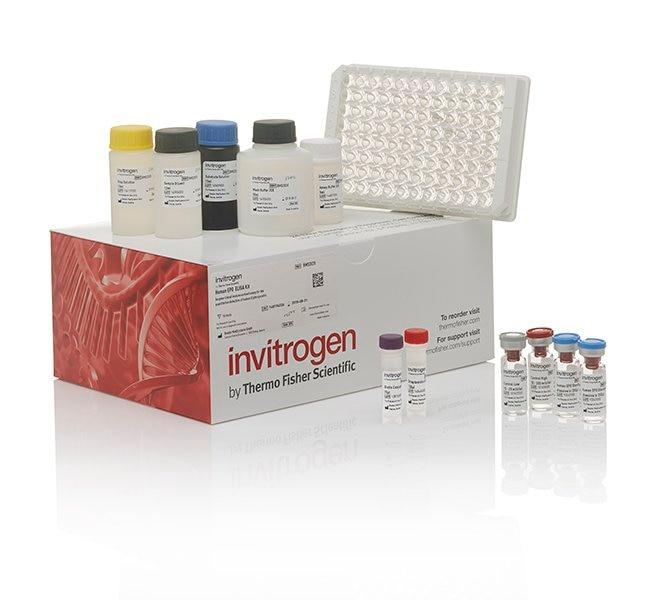Search Thermo Fisher Scientific
Product Specifications
Analytical sensitivity
Assay range
Sample type/volume
Hands-on time
Time-to-result
Homogenous (no wash)
Interassay CV
Intraassay CV
Instrument
Product size
Contents
Standard
Assay Diluent concentrate
HRP-Conjugated Detection Antibody
Wash Buffer
Chromogen
Stop Solution
Adhesive Plate Covers
Shipping conditions
Storage
Protein name
Species (tested)
Assay kit format
Detector antibody conjugate
Label or dye
About This Kit
The Multispecies Estrone ELISA quantitates estrone in fecal extracts, urine, and tissue culture media.
Principle of the method
The Estrone Competitive ELISA research-use-only kit is designed to quantitatively measure estrone present in extracted dried fecal samples, urine, and tissue culture media samples. The kit is unique as it measures both non-conjugated estrone, estrone-3-sulfate, and estrone 3-glucuronide in urine and fecal samples with almost equal affinity, allowing for non-invasive testing of this steroid. An estrone standard is provided to generate a standard curve for the assay and all samples should be read off the standard curve. Standards or diluted samples are pipetted into a clear microtiter plate coated with an antibody to capture rabbit antibodies. An estrone-peroxidase conjugate is added to the standards and samples in the wells. The binding reaction is initiated by the addition of a polyclonal antibody to estrone to each well. After a 2-hour incubation the plate is washed and substrate is added. The substrate reacts with the bound estrone-peroxidase conjugate. After a short incubation, the reaction is stopped and the intensity of the generated color is detected in a microtiter plate reader capable of measuring at 450 nm.
Rigorous validation
Each manufactured lot of this ELISA kit is quality tested for criteria such as sensitivity, specificity, precision, and lot-to-lot consistency. See manual for more information on validation.
Estrone is an aromatized C18 steroid with a 3-hydroxyl group and a 17-ketone, a major mammalian estrogen. it is converted from androstenedione directly, or from testosterone via estradiol. In humans, it is produced primarily by the cyclic ovaries, placenta, and the adipose tissue of men and postmenopausal women. Therapeutic estrone is the synthetic form of a naturally occurring estrogen estrone. Estrone diffuses through the cell membrane and binds to and subsequently activates the nuclear estrogen receptor found in the reproductive tract, breast, pituitary, hypothalamus, liver, and bone. The activated hormone-receptor complex gets translocated to the nucleus where it binds to the estrogen response element on the dna and promotes the transcription of target genes involved in the functioning of the female reproductive system and secondary sex characteristics. Estrone increases the hepatic synthesis of sex hormone binding globulin (shbg), thyroid-binding globulin (tbg), and other serum proteins, as well as suppresses the release of follicle-stimulating hormone (fsh) and luteinizing hormone (lh) from the anterior pituitary. [National Center for Biotechnology Information. PubChem Compound Database; CID=5870].
For Research Use Only. Not for use in diagnostic procedures. Not for resale without express authorization.
References (0)
Bioinformatics
Protein Aliases : Folliculin, OESTRONE, C18H22O2

Performance Guarantee
If an Invitrogen™ antibody doesn't perform as described on our website or datasheet,we'll replace the product at no cost to you, or provide you with a credit for a future purchase.*
Learn more
We're here to help
Get expert recommendations for common problems or connect directly with an on staff expert for technical assistance related to applications, equipment and general product use.
Contact tech support

